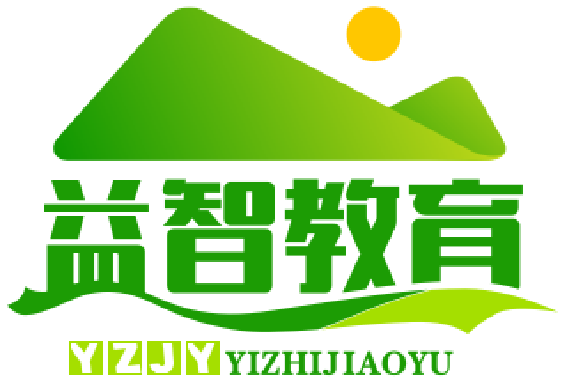“党务思维”并不是一个官方术语,但它在党务工作者和党员干部中是一个被广泛理解和运用的概念,它指的是一种围绕党的中心工作、遵循党的组织原则、体现党的根本宗旨的思考方式、工作方法和行为准则,就是“想问题、作决策、办事情”都要从党的立场、原则和利益出发。
下面我将从核心内涵、主要特征、实践要求和常见误区四个方面,对“党务思维”进行详细解读。
核心内涵:党务思维是什么?
党务思维的本质是“政治思维”在党务工作中的具体化,它要求将讲政治摆在首位,确保一切工作都服务于党的执政基础、执政目标和执政使命,其核心内涵可以概括为以下几个“围绕”:
-
围绕“两个确立”和“两个维护”
- “两个确立”:确立习近平同志党中央的核心、全党的核心地位,确立习近平新时代中国特色社会主义思想的指导地位,这是党务思维的“根”和“魂”。
- “两个维护”:坚决维护习近平总书记党中央的核心、全党的核心地位,坚决维护党中央权威和集中统一领导,这是党务思维的“最高政治原则”。
- 思维体现:在任何时候、任何情况下,都要同以习近平同志为核心的党中央保持高度一致,确保党的路线方针政策不折不扣地贯彻执行。
-
围绕“以人民为中心”
- 这是党的根本宗旨,党务思维的根本出发点和落脚点都是人民。
- 思维体现:思考工作时要问自己“群众需要什么?”“群众反对什么?”“群众满意吗?”,将群众的“急难愁盼”问题作为工作的重点,解决好群众的操心事、烦心事、揪心事。
-
围绕“服务大局”
- 党务工作不是孤立的,必须服从于党和国家事业发展的全局。
- 思维体现:将本地区、本部门、本单位的工作放到国家发展的大局中去谋划和定位,在经济工作中,要思考如何服务于高质量发展;在基层治理中,要思考如何服务于平安中国、法治中国建设。
-
围绕“民主集中制”
- 这是党的根本组织原则和领导制度,是党务思维中最重要的决策思维。
- 思维体现:
- 民主:在决策前充分发扬民主,广泛听取意见,进行科学论证。
- 集中:在民主讨论的基础上,按照少数服从多数、下级服从上级、全党服从中央的原则进行集中决策,形成统一意志和行动,一旦决策,就必须坚决执行。
-
围绕“全面从严治党”
- 这是新时代党的建设的鲜明主题,也是党务思维的“底线思维”。
- 思维体现:把纪律和规矩挺在前面,抓早抓小,防微杜渐,在干部选拔、党员发展、组织生活中,都要坚持高标准、严要求,营造风清气正的政治生态。
主要特征:党务思维长什么样?
党务思维在实践中表现出以下几个鲜明的特征:
-
政治性
- 首要特征,党务工作首先是一项政治工作,思考问题时,第一反应是“政治上站得稳不稳?”“政治上有没有问题?”“符不符合政治要求?”,在处理意识形态问题时,必须从维护国家政治安全的高度来考量。
-
原则性
党务工作有严格的“红线”和“底线”,党务思维强调按原则办事,按规矩办事,不搞“上有政策、下有对策”,不打“擦边球”,处理问题时,首先考虑的是“党章怎么规定?”“制度怎么要求?”,而不是“有没有变通的办法?”。
-
系统性
党的建设是一个系统工程,包括政治建设、思想建设、组织建设、作风建设、纪律建设,并把制度建设贯穿其中,党务思维要求用普遍联系的观点看问题,统筹推进各项工作,避免“单打一”和“顾此失彼”,在抓经济发展的同时,必须同步抓好党风廉政建设和干部队伍建设。
-
群众性
“从群众中来,到群众中去”是党的工作路线,党务思维强调深入基层、深入群众,倾听群众呼声,相信和依靠群众,工作方法上注重宣传群众、组织群众、发动群众,把党的主张变成群众的自觉行动。
-
前瞻性
党务工作不仅要解决当前问题,还要着眼长远,党务思维要求有战略眼光,能够预见未来可能出现的风险和挑战,提前谋划、提前布局,在干部队伍建设中,要注重年轻干部的储备和培养,为党的事业长远发展提供人才支撑。
实践要求:如何运用党务思维?
将党务思维转化为实际行动,需要做到以下几点:
-
强化理论武装,筑牢思想根基
持续深入学习习近平新时代中国特色社会主义思想,特别是关于党的建设的重要论述,用党的创新理论指导实践、推动工作。
-
坚持问题导向,破解工作难题
敢于正视和面对党建工作中的短板和弱项,如基层党组织虚化弱化、党员教育管理不严等,用党务思维分析问题根源,找到切实可行的解决方案。
-
注重方式方法,提升工作效能
- 抓“关键少数”:突出对领导干部特别是“一把手”的监督和管理。
- 抓“基层支部”:树立“党的一切工作到支部”的鲜明导向,把党支部建设成为坚强战斗堡垒。
- 抓“深度融合”:推动党建工作与业务工作同谋划、同部署、同推进、同考核,防止“两张皮”。
-
严守纪律规矩,永葆政治本色
带头遵守党的政治纪律、组织纪律、廉洁纪律、群众纪律、工作纪律、生活纪律,做到知敬畏、存戒惧、守底线。
常见误区:需要警惕的“伪党务思维”
在实践中,要警惕一些被扭曲或形式化的“伪党务思维”:
-
“形式主义”思维
- 表现:重“痕”不重“绩”,留“迹”不留“心”,党建工作“文件来文件去”,会议套会议,台账记录“完美无瑕”,但实际效果寥寥,没有解决任何实际问题。
- 纠正:树立正确的政绩观,以解决实际问题、提升组织力、增强群众获得感为衡量标准。
-
“业务两张皮”思维
- 表现:认为党建工作是党务部门自己的事,与业务部门无关,党建工作与业务工作“各吹各的号,各唱各的调”,相互脱节。
- 纠正:深刻理解“抓好党建是最大政绩”的内涵,将党建工作融入业务工作的全过程,以党建引领业务发展,以业务实绩检验党建成效。
-
“僵化教条”思维
- 表现:不顾实际情况,死搬硬套上级文件和会议精神,搞“一刀切”,工作方法陈旧,缺乏创新,对新情况新问题束手无策。
- 纠正:坚持实事求是,将上级精神与本地本单位实际相结合,创造性地开展工作,增强党建工作的时代感和吸引力。
党务思维是一种高度自觉、系统全面、务实管用的政治思维和工作方法,它要求党员干部时刻牢记自己的第一身份是共产党员,第一职责是为党工作,在思想上、政治上、行动上始终与党中央保持高度一致,在新时代,具备和运用好党务思维,是提升党的执政能力和领导水平,确保党始终成为中国特色社会主义事业坚强领导核心的关键所在。











